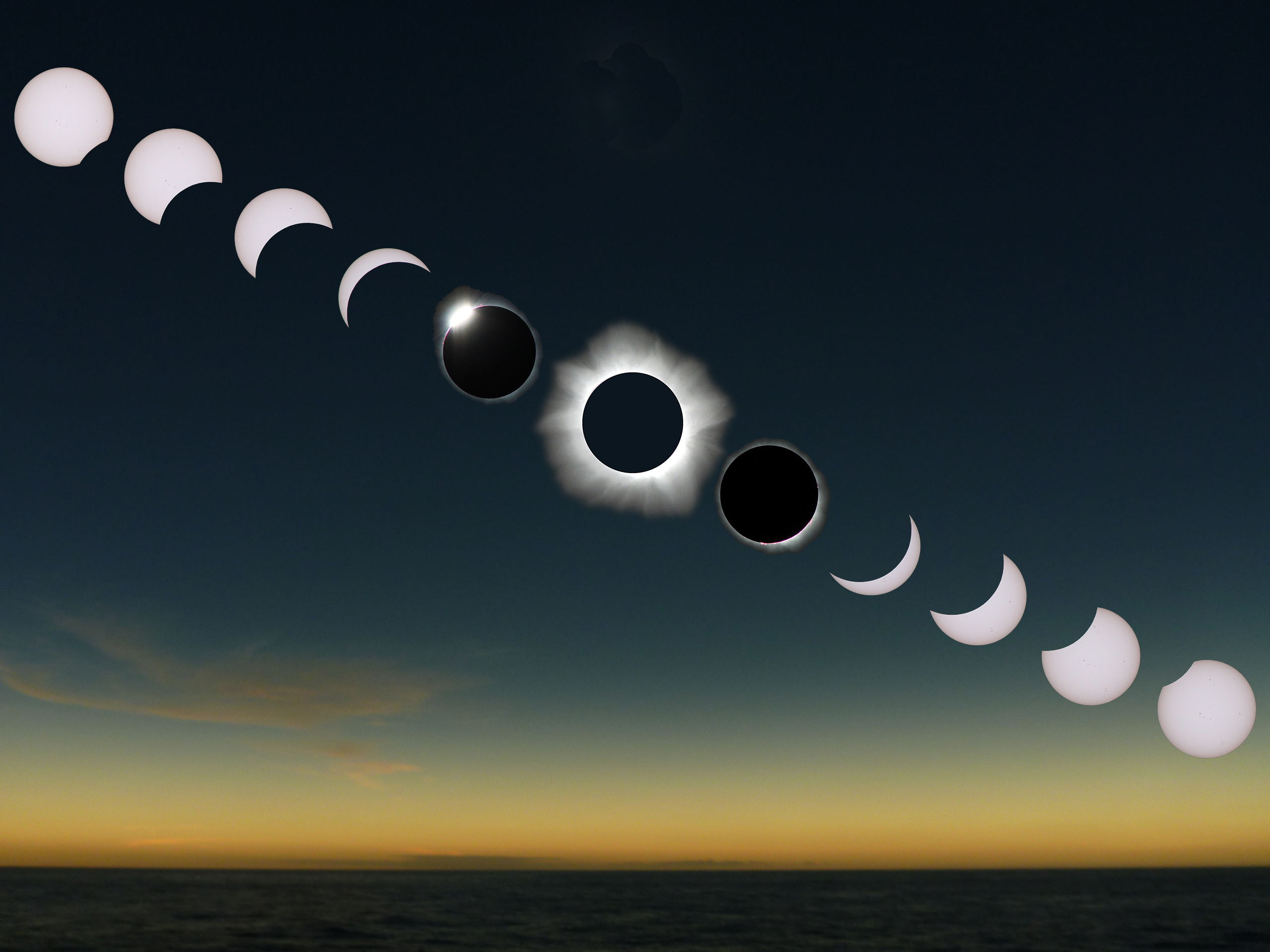Anatomy of an Eclipse [1]
Day will briefly turn to night for parts of the United States on August 21 during a total solar eclipse. The Moon will completely cover the Sun's disk, blocking the sunlight but allowing the Sun's pearly outer atmosphere, the corona, to shine through. This multiple-exposure image shows the entire sequence of an eclipse as the Moon slowly encroaches on the Sun's brilliance, covers the Sun (center), then retreats. While the total eclipse is safe to look at with the eye alone, the Sun is still so bright at all other phases of the eclipse that looking at it without proper protection can result in eye damage. [Rick Fienberg/TravelQuest International/Wilderness Travel]
More information about the eclipse:

